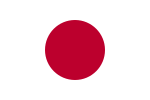| Part of a series on |
| Shinto |
|---|
 |
| Part of a series on the |
| Culture of Japan |
|---|
 |
Japanese festivals are traditional festive occasions often celebrated with dance and music in Japan. In Japan, festivals are called matsuri (祭り), and the origin of the word matsuri is related to the kami (神, Shinto deities); there are theories that the word matsuri is derived from matsu (待つ) meaning "to wait (for the kami to descend)", tatematsuru (献る) meaning "to make offerings to the kami", and matsurau (奉う) meaning "to obey the kami".[1] The theory that it is derived from matsurau is the most popular.[2]
It is estimated that there are between 100,000 and 300,000 festivals across Japan,[3][4] generating an annual economic impact of 530 billion yen as of 2019.[4] As of 2024, 33 of these festivals have been registered as UNESCO Intangible Cultural Heritage Lists as "Yama, Hoko, Yatai, float festivals in Japan".[5] Various folk dances, costume processions, kagura, dengaku, bugaku, and noh performed at festivals are also registered as UNESCO Intangible Cultural Heritage Lists.[6] For example, 41 folk dances including bon odori from various regions of Japan are registered as "Furyu-odori"[7] and 10 costume processions including namahage are registered as "Raihō-shin".[8]
Japanese festivals reflect the unique religious beliefs of the Japanese people, who worship onryō (怨霊, vengeful spirits) and violent kami, based on the background of Japan's frequent natural disasters. Based on the syncretism of Shinto and Buddhism, Japanese people worship not only the spirits that inhabit all things and the souls of their ancestors, but also terrifying onryō and violent kami that protect people from epidemics and natural disasters. For example, Gion Matsuri, Tenjin Matsuri (ja), and Kanda Matsuri, which are considered the three major festivals in Japan, worship the onryō of Gozu Tennō, Sugawara no Michizane, and Taira no Masakado, respectively, and pray for good health and protection from natural disasters. Since these festivals are held in urban areas, each attracts hundreds of thousands to over a million spectators each year.[9][10] On the other hand, Gion Matsuri, Aoi Matsuri, and Jidai Matsuri are considered the three major festivals in Kyoto. Gion Matsuri attracts huge crowds to see the procession of huge dashi (山車, matsuri floats) and mikoshi (神輿, portable shrines), while Aoi Matsuri and Jidai Matsuri attract crowds to see the procession of people dressed in period costumes.[11]
The Aomori Nebuta Matsuri and the Tokushima Awa Odori are large, historic festivals in local cities that attract more than 2 million visitors each year, and more than 1 million visitors each year, respectively.[12][13] According to a 2022 survey, they ranked first and second, respectively, in recognition in Japan, with the Gion Matsuri in third place.[14]
There are also many Japanese festivals in which the kami are prayed to for a good harvest of rice and other crops. In agricultural festivals, different ceremonies are held in each of the four seasons, and festivals are classified into different types, such as otaue-matsuri (御田植祭) and aki-matsuri (秋祭り), according to their significance. In general, festivals held in the spring pray for a good harvest for the year, festivals held in the summer pray for rice and crops to be free from pests and storm damage, festivals held in the fall offer gratitude for the harvest, and festivals held in the winter pray for a good harvest in the new year.[15]
Many secular and modern festivals are also held, with the Sapporo Snow Festival attracting 2.73 million visitors in 2019.[16]
- ^ 都市と祭り (in Japanese). Fukushimaken Jinjacho. Archived from the original on 2 December 2021. Retrieved 16 May 2024.
- ^ Satoru Yamaguchi. 都市と祭り (PDF) (in Japanese). Archived from the original (PDF) on 16 May 2024. Retrieved 16 May 2024.
- ^ 【日本の祭り】全国お祭りMAP (in Japanese). nippon.com. 28 June 2012. Archived from the original on 29 May 2023. Retrieved 16 May 2024.
- ^ a b 経済効果5300億円、「お祭り大国・日本」が目指すべき持続可能なお祭りの姿 (in Japanese). Mitsui Fudosan. 18 April 2023. Archived from the original on 1 October 2023. Retrieved 16 May 2024.
- ^ "Yama/Hoko/Yatai: the Float Festivals of Japan" (in Japanese). Agency for Cultural Affairs. Archived from the original on 29 February 2024. Retrieved 16 May 2024.
- ^ "Intangible Cultural Heritage" (in Japanese). Agency for Cultural Affairs. Archived from the original on 29 April 2024. Retrieved 16 May 2024.
- ^ "Furyu-odori: Ritual Dances Imbued with People's Hopes and Prayers" (in Japanese). Agency for Cultural Affairs. Archived from the original on 29 February 2024. Retrieved 16 May 2024.
- ^ "Raiho-shin: Ritual Visits of Deities in Masks and Costumes" (in Japanese). Agency for Cultural Affairs. Archived from the original on 29 February 2024. Retrieved 16 May 2024.
- ^ "四季を彩る日本の祭り:郷土に根差す祈りの形" (in Japanese). nippon.com. 2 May 2023. Archived from the original on 30 May 2023. Retrieved 16 May 2024.
- ^ 【日本三大祭り】京都「祇園祭」・大阪「天神祭」・東京「神田祭」:実は「日本三大『怨霊鎮め』祭り」でもある (in Japanese). nippon.com. 11 June 2023. Archived from the original on 11 June 2023. Retrieved 16 May 2024.
- ^ "京都市のあらまし(京の三大祭と五山送り火)" (in Japanese). Kyoto City. 27 August 2019. Archived from the original on 1 April 2023. Retrieved 16 May 2024.
- ^ 戻った歓声、熱気ふたたび 青森ねぶた祭開幕、大型ねぶた23台出陣 (in Japanese). The Asahi Shimbun. 3 August 2023. Archived from the original on 6 August 2023. Retrieved 16 May 2024.
- ^ 徳島の阿波おどり 400年超の歴史 全国の「総本山」 (in Japanese). The Nikkei. 12 August 2018. Archived from the original on 6 September 2018. Retrieved 16 May 2024.
- ^ 「日本の祭り」認知度ランキング、1位は? - 2位「阿波おどり」3位「祇園祭」 (in Japanese). Mynavi News. 14 July 2022. Archived from the original on 30 January 2023. Retrieved 16 May 2024.
- ^ Cite error: The named reference
moaffwas invoked but never defined (see the help page). - ^ さっぽろ雪まつり閉幕 来場者は去年比36.5%増 (in Japanese). NHK. 12 February 2024. Archived from the original on 13 February 2024. Retrieved 16 May 2024.